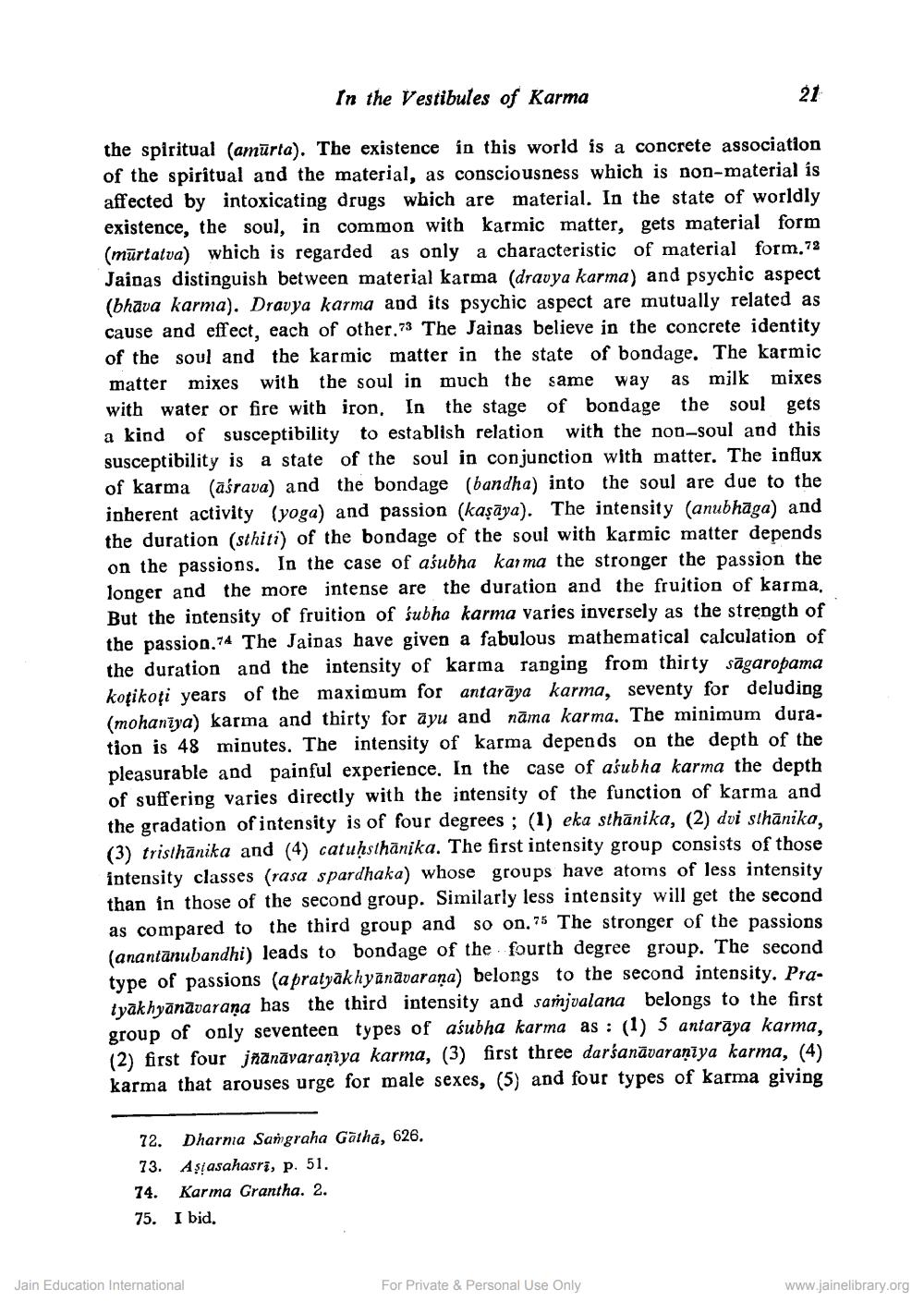________________
In the Vestibules of Karma
21
the spiritual (amūrta). The existence in this world is a concrete association of the spiritual and the material, as consciousness which is non-material is affected by intoxicating drugs which are material. In the state of worldly existence, the soul, in common with karmic matter, gets material form (mūrtatva) which is regarded as only a characteristic of material form.72 Jainas distinguish between material karma (dravya karma) and psychic aspect (bhāva karma). Dravya karma and its psychic aspect are mutually related as cause and effect, each of other.73 The Jainas believe in the concrete identity of the soul and the karmic matter in the state of bondage. The karmic matter mixes with the soul in much the same way as milk mixes with water or fire with iron. In the stage of bondage the soul gets a kind of susceptibility to establish relation with the non-soul and this susceptibility is a state of the soul in conjunction with matter. The influx of karma (aśrava) and the bondage (bandha) into the soul are due to the inherent activity (yoga) and passion (kaşāya). The intensity (anubhāga) and the duration (sthiti) of the bondage of the soul with karmic matter depends on the passions. In the case of aśubha karma the stronger the passion the longer and the more intense are the duration and the fruition of karma. But the intensity of fruition of subha karma varies inversely as the strength of the passion.74 The Jainas have given a fabulous mathematical calculation of the duration and the intensity of karma ranging from thirty sāgaropama koţikoți years of the maximum for antarāya karma, seventy for deluding (mohanīya) karma and thirty for ayu and nāma karma. The minimum dura. tion is 48 minutes. The intensity of karma depends on the depth of the pleasurable and painful experience. In the case of aśubha karma the depth of suffering varies directly with the intensity of the function of karma and the gradation of intensity is of four degrees ; (1) eka sthānika, (2) dvi sthānika, (3) tristhānika and (4) catuḥsthänika. The first intensity group consists of those intensity classes (rasa spardhaka) whose groups have atoms of less intensity than in those of the second group. Similarly less intensity will get the second as compared to the third group and so on.75 The stronger of the passions (anantānubandhi) leads to bondage of the fourth degree group. The second type of passions (apratyakhyānāvarana) belongs to the second intensity. Pratyākhyānāvarana has the third intensity and samjvalana belongs to the first group of only seventeen types of aśubha karma as : (1) 5 antaraya karma, (2) first four jñānāvaraniya karma, (3) first three darśanāvaranīya karma, (4) karma that arouses urge for male sexes, (5) and four types of karma giving
72. Dharma Sangraha Gatha, 626. 73. Aşi asahasri, p. 51. 74. Karma Grantha. 2. 75. I bid.
Jain Education International
For Private & Personal Use Only
www.jainelibrary.org




